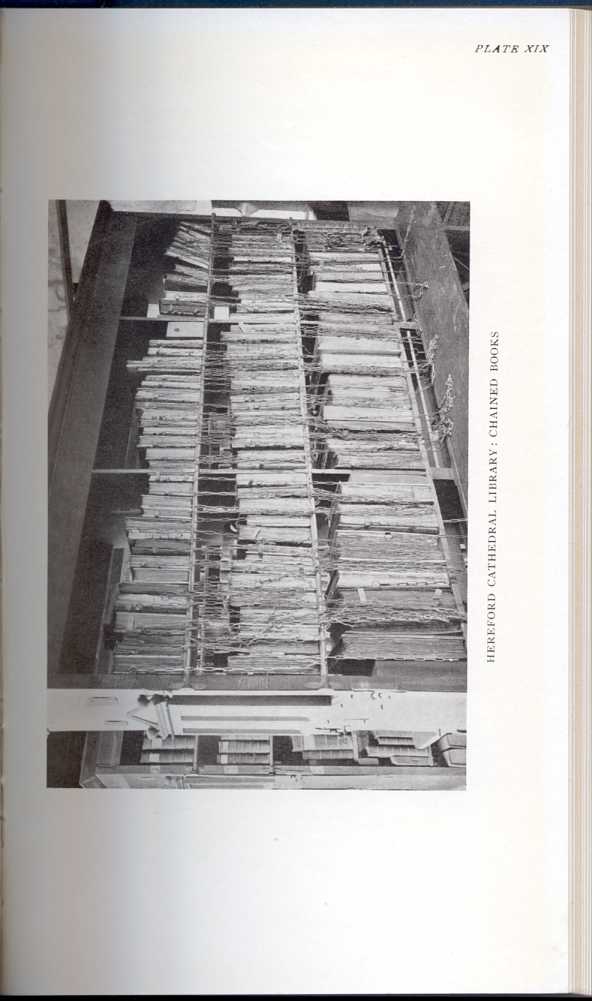| CHAPTER V: CATHEDRAL AND CHURCH LIBRARIES Old English libraries; the making, collection and use of books during the middle ages | ||
3. § III
The history of an old library can only be traced intermittently,
the facts playing hide and seek like a distant lantern carried over
broken ground. Little is known of the early history of Hereford's
cathedral library. An ancient copy of the Gospels, said to have been
bequeathed by the last Saxon bishop, Athelstan (1012), is one of the
earliest gifts. In 1186 Bishop Robert Folliott gave "multa bona in
ferris et libris." Bishop Hugh Folliott also left ornaments and books.
Another bishop, R. de Maidstone, although "vir magnae literaturae, et
in theologia nominatissimus," only seems to have given the church two
antiphonaries, some psalters, and a Legenda. Bishop Charleton
(1369) left a Bible, a concordance, a glossary, Nicholas de Lyra, and
five Books of Moses, all to be chained in the cathedral. Very shortly
 [Description: HEREFORD CATHEDRAL LIBRARY: CHAINED
BOOKS]
[Description: HEREFORD CATHEDRAL LIBRARY: CHAINED
BOOKS]
A new library was built in 1897. Herein are to be seen what are almost certainly the original bookcases, albeit they have been taken to pieces and somewhat altered before being fitted together again. One of the bookcases still has all the old chains and fittings for the books, and it presents a very curious appearance. Every chain is from three to four feet long, with a ring at each end, and a swivel in the middle. One ring is strung on to an iron rod, which is secured at one end of the bookcase by metal work, with lock and key. For convenience in using the book on the reading slope which was attached to the case, the ring at the other end of the chain was fixed to the fore edge of the book-cover instead of to the back; when standing on the shelves the books therefore present their fore edges to the reader. The cases are roughly finished, but very solid in make.[5.22]
| CHAPTER V: CATHEDRAL AND CHURCH LIBRARIES Old English libraries; the making, collection and use of books during the middle ages | ||